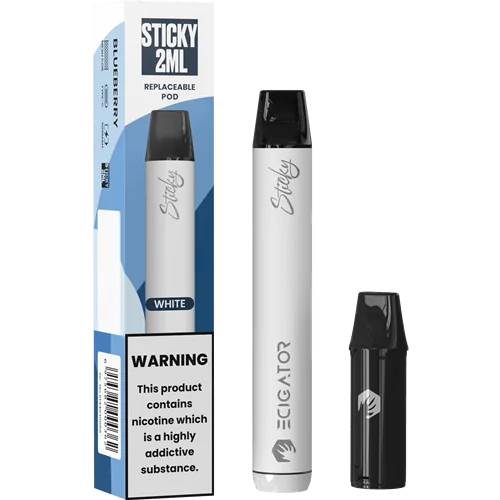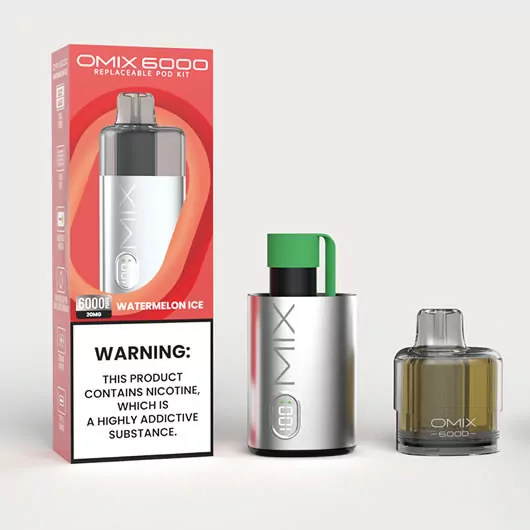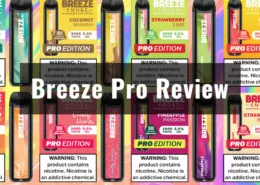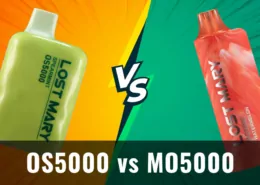Top Vaping Laws in the UK Retailers Must Know for 2025
The UK vaping market has experienced significant growth to make it one of the most dynamic globally, but it operates within an increasingly stringent regulatory framework. For retailers, maintaining compliance is not merely a legal hurdle but a fundamental aspect of responsible business conduct and long-term viability. The UK government is proactively evolving vaping legislation, driven by a dual commitment: supporting adult smokers in transitioning away from combustible tobacco and, crucially, protecting young people and non-smokers from nicotine addiction and potential harm. Environmental concerns associated with certain product types are also a significant catalyst for change.
This comprehensive guide aims to equip UK vape retailers with the knowledge to understand current laws, anticipate major shifts in 2025 and beyond, and implement robust compliance strategies.
Core Regulations: Understanding TRPR
The bedrock of vaping regulation in the UK remains the Tobacco and Related Products Regulations 2016 (TRPR). These regulations transposed the European Union’s Tobacco Products Directive (TPD) into UK law and continue to define the standards for vape products sold nationwide. Retailers must have a thorough grasp of TRPR’s key provisions:
Product Standards
- E-cigarette Tank Capacity: Refillable tanks or pods for vape devices must not exceed a maximum capacity of 2ml. This limitation aims to reduce the volume of e-liquid immediately available in a device, potentially mitigating risks associated with accidental overconsumption or exposure.
- E-liquid Bottle Volume: E-liquid bottles containing nicotine are restricted to a maximum volume of 10ml. This, similar to tank capacity limits, is a harm reduction measure, particularly concerning accidental ingestion by children.
- Nicotine Strength: The maximum permissible nicotine concentration in e-liquids is 20mg/ml (equivalent to 2%). This cap balances the need for sufficient nicotine delivery for adult smokers switching from cigarettes with concerns about high nicotine levels contributing to addiction, especially among new users.
Labelling and Packaging
- Health Warnings: Specific, prominent health warnings are mandatory. The most common is: “This product contains nicotine which is a highly addictive substance.” These warnings must cover 30% of the front and back surfaces of the unit packaging.
- Ingredient Lists: Full ingredient lists must be provided, enabling consumers to be aware of what they are inhaling.
- Information Leaflets: Products must be supplied with an information leaflet detailing instructions for use and storage, contra-indications, warnings for specific risk groups, possible adverse effects, addictiveness, and toxicity, along with the producer’s contact details.
- Child-Resistant and Tamper-Evident Packaging: All e-liquid bottles must be child-resistant and tamper-evident to prevent accidental opening by children and to ensure product integrity.
MHRA Notification
Before any e-cigarette or e-liquid product can be legally sold in the UK, it must be notified to the Medicines and Healthcare products Regulatory Agency (MHRA). This notification process involves manufacturers or importers submitting detailed information about the product, including its ingredients, emissions, and toxicological data. Retailers bear a significant responsibility to ensure they only stock products that appear on the MHRA’s published list of notified products. Sourcing from reputable suppliers who can provide evidence of MHRA notification is crucial. Failure to comply with TRPR can lead to substantial fines, seizure of non-compliant stock, and severe reputational damage.

Ecigator Sticky Prefilled Pod Kit
The Ecigator Sticky Prefiiled Replaceable Vape Pod Kit is new kind of vape kit which the prefilled disposable pod can be changed.
That means you don’t need to throw away the whole kit but just change another pod. Also you can change the pods to taste different flavors.
Read more:
- TRPR and TPD UK Regulations for Vaping Devices and E-Liquids
- check the MHRA list as it is public https://cms.mhra.gov.uk/ecig
The 2025 Disposable Vape Ban
One of the most impactful regulatory changes on the horizon is the confirmed ban on the sale and supply of disposable vapes. This landmark decision, driven by escalating concerns over youth vaping rates and the environmental impact of single-use devices, will come into force from June 1, 2025, across England, Wales, and Scotland. Northern Ireland is anticipated to implement parallel legislation.
Drivers Behind the Ban
- Youth Vaping Epidemic: The accessibility, appealing flavours (often mimicking sweets and fruits), and relatively low price point of disposable vapes have been cited as major contributors to a sharp increase in vaping among under-18s. The government aims to break this trend decisively.
- Environmental Concerns: Disposable vapes, typically containing lithium-ion batteries, plastic casings, and residual e-liquid, create significant electronic waste. Reports estimate millions are discarded weekly, often ending up in landfills due to difficulties in recycling complex, mixed-material small electronic items.
Retailer Adaptation Strategies
This ban necessitates a fundamental shift for many retailers. Proactive adaptation is key:
- Strategic Stock Management: Develop a clear plan to deplete existing disposable vape stock well in advance of the June 2025 deadline to avoid unsaleable inventory.
- Comprehensive Customer Education: Staff must be trained to clearly explain the ban to customers, address their concerns, and expertly guide them towards suitable, compliant, and reusable alternatives such as pod systems, pen-style vapes, or more advanced mod kits. Emphasize the long-term cost-effectiveness and often superior vaping experience of reusable devices.
- Product Portfolio Diversification: Significantly expand offerings of rechargeable and refillable vaping devices. Stock a wide variety of e-liquids (including different nicotine types like nic salts and freebase, and a range of legally permissible flavours) and replacement parts like coils and pods.
- Promoting Sustainability: Highlight the environmental benefits of reusable systems. Consider offering battery recycling advice or facilities for customers using rechargeable devices.
Retailers who successfully pivot their business model away from disposables and towards a more sustainable and responsible product range will be better equipped for long-term growth in the evolving market.

Ecigator OMIX 6000 (2+10ml) Pod Kit
The Ecigator OMIX 6000 is designed to be replaceable and rechargeable, and the ariflow is adjustable.
The kit comes with a 2ml prefilled pod and a 10ml E-liquid container, delivering up to 6000 puffs.
With the mesh coil technology, the OMIX 6000 will produces a consistent pure taste to ensure a superior vaping experience.
Navigating the Tobacco and Vapes Bill
The Tobacco and Vapes Bill, currently progressing through the UK Parliament, signals further substantial reforms for the vaping industry. While subject to amendments during its legislative journey, the Bill proposes several new powers and measures that retailers must prepare for:
Potential New Regulatory Powers
- Flavour Restriction Capabilities: The Bill aims to grant the government powers to regulate vape flavours. This could involve restricting or banning flavours identified as particularly appealing to children (e.g., dessert or candy-like names and profiles). The specifics might range from a list of permitted flavours (such as tobacco, mint, and menthol only) to restrictions on descriptive terms used for flavour marketing. Retailers will need to adapt their inventory accordingly.
- Packaging and Display Regulations: Further regulations on packaging are anticipated, potentially mandating plain or standardised packaging (e.g., uniform colours, font styles, and minimal branding) to reduce product appeal. The Bill also includes powers to regulate how vaping products are displayed in retail settings, possibly requiring them to be kept out of sight of children, similar to tobacco products.
- Introduction of a New Vape Tax: A new excise duty on vaping products is scheduled to be introduced from October 2026. The structure of this tax (e.g., based on e-liquid volume or nicotine strength) is yet to be finalised. Retailers will need to understand the tax implications for their pricing strategies, stock management, and accounting systems. This could also influence consumer price sensitivity and potentially impact the illicit market if not carefully managed.
- Enhanced Enforcement: The Bill introduces powers for trading standards officers to issue on-the-spot Fixed Penalty Notices (FPNs) for breaches of age-of-sale legislation for both tobacco and vape products. This allows for quicker and more direct enforcement against retailers failing to prevent underage sales.
Retailers must diligently monitor official government communications and parliamentary updates to understand the final provisions of the Tobacco and Vapes Bill and ensure timely compliance with any new requirements.
Essential Compliance for Vape Retailers
Beyond specific product regulations and upcoming legislative shifts, ongoing diligence in daily operations is paramount for all vape retailers.
Robust Age Verification
Preventing sales to individuals under the age of 18 is a cornerstone of responsible retailing and a strict legal requirement.
- “Challenge 25” Policy: Implementing and rigorously enforcing a “Challenge 25” policy is best practice. This means staff should request proof of age from any customer who appears to be under 25.
- Acceptable IDs: Staff must be trained to recognize valid forms of identification, such as passports, driving licences, and PASS-accredited proof of age cards.
- Consequences of Failure: Selling vaping products to minors can lead to severe penalties, including substantial fines for both the staff member and the business owner, potential imprisonment for persistent offenders, and even the loss of the right to trade or premises closure orders.
- Online Age Verification: For retailers with an e-commerce presence, robust online age verification systems are essential. These must go beyond simple tick-box declarations and should involve third-party verification services that check against databases.
Product Compliance and Sourcing
Retailers are legally responsible for ensuring that all products they offer for sale are fully compliant with UK regulations.
- MHRA Verification: Regularly check that all e-liquids and devices stocked have been notified with the MHRA. Do not rely solely on supplier assurances; verify product status independently if possible.
- Reputable Suppliers: Forge strong relationships with reputable UK-based suppliers and manufacturers who can provide clear evidence of product compliance, including batch certificates and MHRA submission details.
- Avoiding Counterfeits: Be vigilant against counterfeit and illicit vape products. These products not only pose safety risks due to potentially harmful, unregulated ingredients and faulty devices but can also lead to severe legal penalties and irreparably damage a business’s reputation. A transparent and traceable supply chain is crucial.
Advertising and Promotion Restrictions
TRPR imposes significant restrictions on the advertising and promotion of vaping products. The overarching aim is to prevent marketing that could appeal to non-smokers, especially young people, or make unsubstantiated health claims.
- Permitted Information: Factual information at the point of sale (e.g., price, nicotine strength, basic product characteristics, list of ingredients) is generally permitted.
- Prohibited Advertising: Most forms of advertising in media like newspapers, magazines, online (unless strictly limited to factual information on retailer websites with robust age verification), and on television or radio are banned. Lifestyle advertising, health or medicinal claims (beyond accurately stating that vaping is likely less harmful than smoking for existing smokers), and promotions that could appeal to children (e.g., using cartoons, sweet-like imagery, or influencer marketing targeting youth) are strictly prohibited.
- Social Media: Retailers using social media must be extremely cautious. Paid promotion is generally not allowed, and organic content must be factual, target adult smokers/vapers, and not use imagery or language appealing to under-18s.
Future Licensing and Registration Schemes
While not currently mandated nationwide, discussions surrounding a potential licensing or registration scheme for vape retailers are ongoing, particularly as part of the broader objectives of the Tobacco and Vapes Bill. Such a scheme could aim to:
- Improve oversight of the retail sector.
- Facilitate easier and more effective enforcement of regulations.
- Raise overall standards within the industry.
Retailers should anticipate that a future licensing regime might involve application fees, adherence to specific operational standards (e.g., staff training, record keeping, premises conditions), and a “fit and proper person” test for applicants. Monitoring developments in this area is advisable for future business planning.

ECIGATOR
Ecigator is one of the well-known vape brands spun off from FM Technology Co., Ltd, it’s an ISO-certified disposable vape manufacturer for OEMs, ODMs, and OBM since 2010. The founder team comes from top firms with more than 10 years of experience in the vaping industry and has devoted thousands of hours to providing users with a better and better experience.
Preparing Your Business for Change
The UK vaping landscape is undeniably undergoing a period of profound regulatory transformation. To successfully navigate these changes and build a resilient business, retailers should adopt a proactive and informed approach:
- Stay Continuously Informed: Make it a priority to regularly check for updates from official sources such as the Office for Health Improvement and Disparities (OHID), the MHRA, and relevant parliamentary bodies. Subscribing to newsletters from reputable industry associations can also provide valuable insights.
- Embrace Product Diversification: Strategically shift focus away from products facing imminent bans or significant restrictions (like disposables). Expand your inventory to include a broad range of compliant, reusable vaping systems—from simple pod kits for beginners to more advanced mods for experienced users. Offer a diverse selection of e-liquids (nicotine salts, freebase liquids, various VG/PG ratios) and essential accessories like coils and batteries to cater to varied customer preferences transitioning from disposables.
- Invest in Comprehensive Staff Training: Ensure all staff members are thoroughly trained on current vaping laws, upcoming changes (like the disposable ban and the Tobacco and Vapes Bill provisions), product knowledge (especially regarding alternatives to disposables), and stringent age verification protocols. Conduct regular refresher training and consider role-playing scenarios for handling challenging customer interactions, such as explaining flavour restrictions or why a sale is being refused.
- Foster Proactive Customer Engagement: Communicate upcoming regulatory changes clearly and transparently to your customers. Develop informative materials (e.g., leaflets, in-store signage, website FAQs) explaining new laws and guiding customers towards suitable, compliant product alternatives. Consider loyalty programs to support customers transitioning to reusable systems.
- Critically Review and Adapt Business Models: Evaluate the potential financial impact of new taxes, potential licensing fees, and shifts in product popularity on your pricing structure, profit margins, and overall business strategy. Engage in scenario planning to prepare for different regulatory outcomes.
- Promote Responsible Disposal and Sustainability: Beyond complying with the disposable vape ban, demonstrate a broader commitment to environmental responsibility. Provide customers with clear information on how to responsibly dispose of used batteries and old vaping devices. Partnering with or signposting to WEEE (Waste Electrical and Electronic Equipment) recycling schemes can enhance your business’s reputation.
- Seek Professional Advice When Needed: For complex legal interpretations or significant financial planning related to new taxes or business restructuring, do not hesitate to seek advice from legal or financial professionals specializing in the retail sector.
Conclusion
The UK vaping industry is maturing, and with this maturity comes an increased regulatory focus on public health, youth protection, and environmental sustainability. While the upcoming changes, particularly the 2025 disposable vape ban and the measures within the Tobacco and Vapes Bill, will present challenges, they also offer opportunities for responsible retailers to differentiate themselves. Those businesses that prioritize compliance, invest in staff knowledge, proactively adapt their product offerings, and maintain a strong ethical compass will not only navigate the evolving legal landscape successfully but will also build trust with their customers and contribute positively to a well-regulated and responsible vaping market. The future belongs to retailers who are informed, adaptable, and unequivocally committed to lawful and ethical operations.
- Mexico Passes Law to Ban Tobacco Ads, Expand Smoke-Free Zones - August 13, 2025
- Big Vape Brands Bypass Ad Bans Via Global Social Media - August 13, 2025
- UK to Make Vape Sellers Pay for E-Waste Disposal - August 13, 2025








